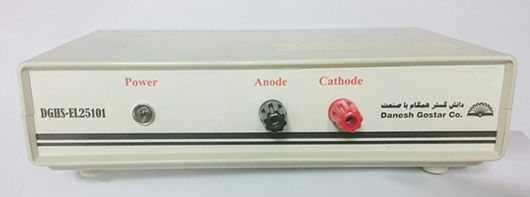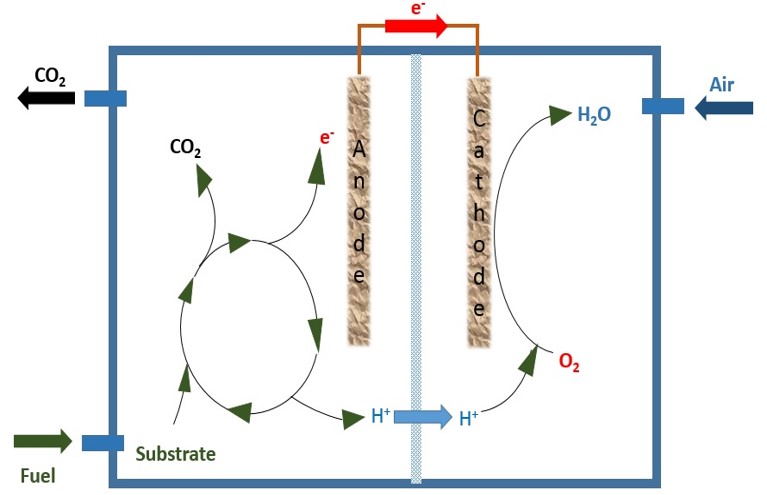A brief introduction to MFCs:
Microbial fuel cells (MFCs) provide new opportunities for the sustainable production of energy from biodegradable, reduced compounds. MFCs function on different carbohydrates but also on complex substrates present in wastewaters. As yet there is limited information available about the energy metabolism and nature of the bacteria using the anode as electron acceptor; few electron transfer mechanisms have been established unequivocally. To optimize and develop energy production by MFCs fully this knowledge is essential. Depending on the operational parameters of the MFC, different metabolic pathways are used by the bacteria. Approximately all MFCsconsist of anode and cathode chambers, physically separated by a proton exchange membrane (PEM). Active biocatalyst in the anode oxidizes the organic substrates and produces electrons and protons. The protons are conducted to the cathode chamber through the PEM, and the electrons are conveyed through the external circuit. Protons and electrons are reacted in the cathode chamber along with parallel reduction of oxygen to water. Eventually, the produced current can be consumed by another device.
A brief introduction to Sedimentary Microbial Fuel Cells (SMFCs):
A likely application of microbial fuel cell (MFC) technology is in remote bodies of water where electric energy can be extracted from organic-rich aquatic sediments. For this purpose, researchers have developed sediment MFCs that consist of an anode electrode embedded in the anaerobic sediment and a cathode electrode suspended in the aerobic water column above the anode electrode. Electricigenic bacteria in the sediment transfer electrons produced during the oxidation of organic or inorganic matter to the anode electrode; while oxygen is reduced in the water column by accepting electrons from the cathode electrode. High salinity of sea water provides a significant conductivity between two electrodes and also all the required microorganisms for electricity generation are presented in sediments. Furthermore, the natural gradiant of oxygen existed in sediment acts as membrane and that's why SMFCs are able to be operated without any membranes.
The latest efforts done in MFC field:
1. Fabricating a flexible anode based on bacterial cellulose to improve the power generated by MFCs.
2. Improving operational function of MFCs by developing a graphen oxide modified cathode electrode as an alternative to platinum catalysts.
3. Sulfide remediation from wastewaters and electricity generation by applying MFCs
4. Remediation of Phenol from petrochemical wastes by developing a single-chamber MFC (SCMFC)
Available services related to MFCs:
1. Fabrication of various configuration of MFCs
2. Constructing novel types of electrodes such as polymer and composite ones
3. Instructional and consulting services
4. Fabricating of all professional devices for any experimental tests related to MFCs
5. Constructing any flow converters and power supplies
6. Doing MFCs' all performance tests, electrochemical malicious and non-malicious tests, and all the tests related to the corrosion of electrodes




